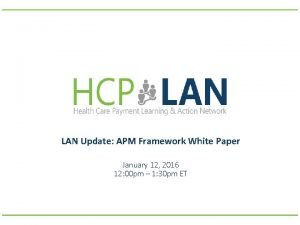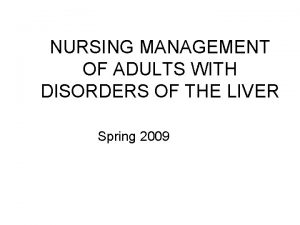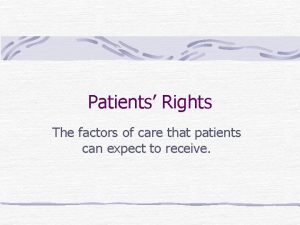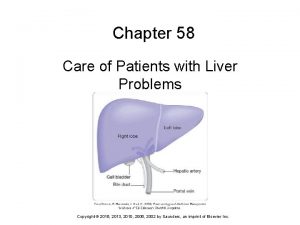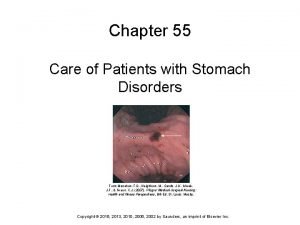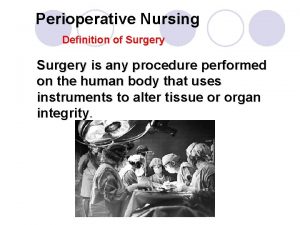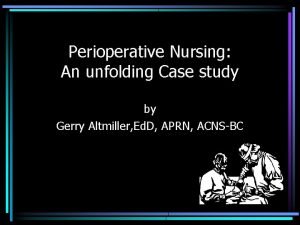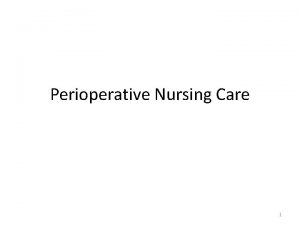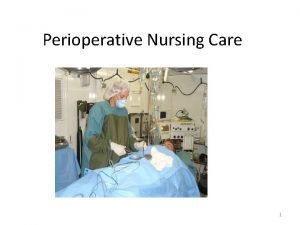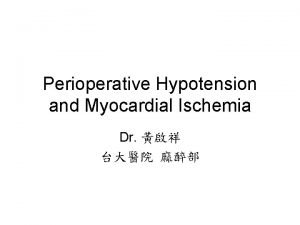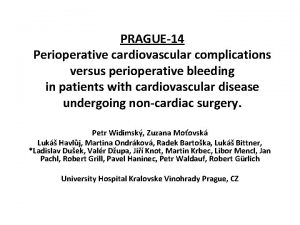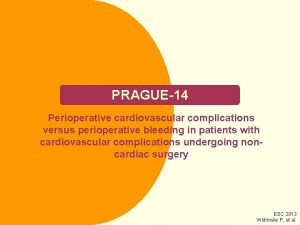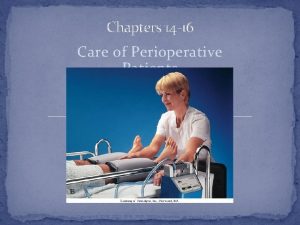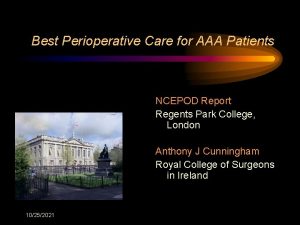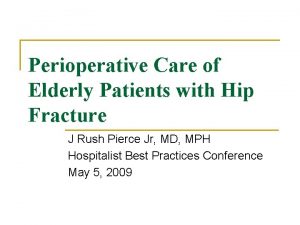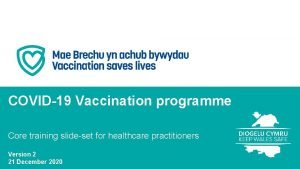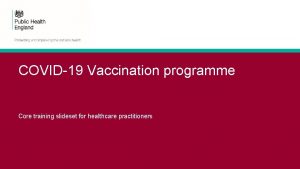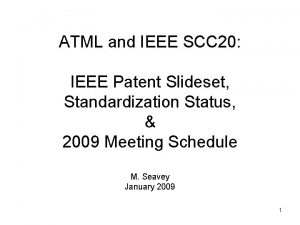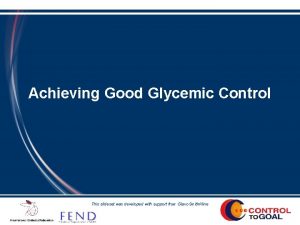Enhanced PeriOperative Care for Highrisk patients Introductory slideset


















- Slides: 18

Enhanced Peri-Operative Care for High-risk patients Introductory slide-set

• 234 million major surgical procedures worldwide • True mortality rate is not known • A preventable death rate of 1% would result in. . . 2. 3 million avoidable deaths each year


Variation in mortality after emergency surgery in the UK Symons N et al. Brit J Surg 2013; 100: 1318 -25.

More patients die following surgery on a Friday…

Background • 80% of surgical deaths in high-risk group • Emergency laparotomy is a typical case • Patient care is highly variable • Survival is highly variable • Quality improvement may improve outcome

1987

Objectives Can a quality improvement project to implement a care pathway improve 90 day survival for emergency laparotomy? – Integrated ethnographic evaluation – Cost-effectiveness of project – Long-term impact on mortality (via HQIP-NELA)

Pilot data • Emergency Laparotomy Network & HES data • Wide variations in standards of care • 30 day mortality varies widely (4 to 31%) • 25% mortality at 90 days Saunders et al. Brit J Anaesth 2012; 109: 368 -75.

Trial design • Stepped wedge randomised cluster trial – Hospitals randomised in geographical clusters – Integrated ethnographic & economics analyses – Data capture via HQIP-NELA • Intervention – Integrated Care Pathway – Local leadership by ‘champions’ – QI training, cluster meetings, web-based resources

Integrated Care Pathway adapted from: Higher Risk Surgical Patient; RCS 2011

Patients Aged ≥ 40 years undergoing non-elective open abdominal surgery in acute NHS hospitals Exclusions: Gynaecological and trauma laparotomy, Repeat laparotomy, Appendicectomy

Outcome measures • Primary: 90 day mortality • Secondary: – Hospital stay – Hospital re-admission – 180 day mortality – Cost effectiveness

Sample size • Recruited 98 NHS hospitals in 15 regional clusters • 27, 540 patients • 90% power for mortality reduction from 25 to 22% • Fixed 85 week intervention period • Potential to recruit every eligible patient

Project team • Pragmatic CTU, QMUL • Quality improvement team led by Carol Peden • Ethnography expertise from Leicester • Methodology expertise from Birmingham • EPOCH pathfinder hospitals • Advisory group representing all stakeholders

Trial timelines • Winter 2013/14 – Start-up • March 2014 – Trial starts (data collection via NELA) • April 2014 – First cluster ‘activated’ to QI intervention • August 2015 – Final cluster activated • Mid - Sept 2015 – Final patient recruited Cluster randomisation diagram

QI intervention: site timeline

? EPOCH CONTACTS Trial Queries kirsty. everingham@bartshealth. nhs. uk 0203 594 0352 Quality Improvement Queries qi@epochtrial. org 0203 594 0352
 Phases of preoperative care
Phases of preoperative care Preoperative nursing definition
Preoperative nursing definition Cdphp enhanced primary care
Cdphp enhanced primary care Enhanced primary care mental health
Enhanced primary care mental health Enhanced health in care homes
Enhanced health in care homes Esophageal varices nursing management
Esophageal varices nursing management Factors of care a patient can expect
Factors of care a patient can expect Chapter 58 care of patients with liver problems
Chapter 58 care of patients with liver problems Cataracts ncp
Cataracts ncp Chapter 55 care of patients with stomach disorders
Chapter 55 care of patients with stomach disorders Nursing diagnosis for undescended testis
Nursing diagnosis for undescended testis Tertiary level of care
Tertiary level of care Definition of perioperative
Definition of perioperative Perioperative case study
Perioperative case study Ccs perioperative guidelines
Ccs perioperative guidelines Varför kallas perioden 1918-1939 för mellankrigstiden
Varför kallas perioden 1918-1939 för mellankrigstiden Informationskartläggning
Informationskartläggning Gibbs reflekterande cykel
Gibbs reflekterande cykel Borstål, egenskaper
Borstål, egenskaper


